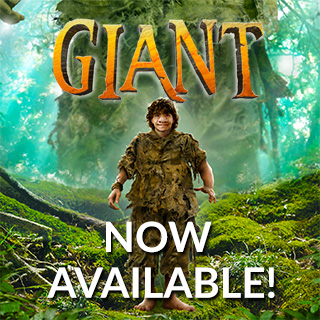Seeing Through the Eyes of a Whale

In this essay from 1995, originally written for Children’s Book Review magazine, I explored what it means for a story to feel true and how the threads of truth and imagination are woven together. Whether I’m delving into the mythical world of Merlin or capturing the mystery of the sea in The Merlin Effect, the goal remains the same: to create stories that resonate deeply and connect us to something larger than ourselves. With a focus on the vividness of nature — whether on land or at sea — this essay touches on my journey to make the sea feel real and what I learned from an unforgettable encounter with a whale.
Seeing Through the Eyes of a Whale
What makes a story true? As I write (or try to write) in the attic of our pandemonious home, surrounded by four children under the age of seven, my thoughts often turn to that question.
The greatest challenge of writing my most recent novel, The Merlin Effect, was to weave several widely varied threads together into a single, seamless whole. Into something true. Those threads included a new twist on the legend of Merlin, a twelve-year-old girl’s relationship with her father, a sunken Spanish galleon, a mysterious prophecy, a magical drinking horn, and a bit of genetic theory. If any one of these threads did not feel completely true, the whole tapestry would suffer.
As the weaving progressed, I realized that one thread would be more challenging for me than all the rest: the sea. The sounds and smells, the rhythms and mysteries of the sea. In particular, I needed to bring to life my book’s setting, a mysterious whirlpool off the coast of Baja California. It is a dangerous place, shrouded with mist. The local villagers call it the place where the sea begins, the womb where the waters are born. What’s more, the whirlpool is surrounded by a strange group of whales — gray whales — who are ever circling, ever singing. No one knows why.
Having lived much of my life in Colorado, the mountains and alpine meadows are in my blood. But the sea is not. The only solution was to go there. So I spent some time camping on the Baja coast, armed with snorkel and sea kayak.
Gradually, the screech of gulls and the smell of kelp became familiar. I learned a little about life under the waves, as well as the waves themselves, and introduced myself to an assortment of crabs and plovers. The sea was starting to feel true for me, so I grew hopeful that I could make it also feel true for my readers. Yet one important aspect of this thread continued to elude me.
The whales. I needed closer contact with whales than could be provided by the dozens of books I had read on marine life or the occasional fluked tail I had seen from a distance.
On the final day of my final trip to Baja, I put in my kayak before sunrise. There was no moon, no starlight. The lagoon was utterly black. All I could hear was the whooshah, whooshah of whales breathing somewhere out there. I could not see them. I could only hope that they could somehow see me — since my kayak sat only eight feet long, and an adult gray whale could reach forty-five feet long.
I paddled quietly, toward the open ocean. Slowly the sun began to rise, turning the sky and the water creamy crimson. I caught sight of one whale lifting its tail above the waves, close enough that I could see streams of water cascading off the flukes. Then, almost as if my legendary whirlpool were coming to life before my eyes, the water began to swirl just off the bow of my kayak.
Like an island emerging, a hulking gray form rose out of the water. In a moment so vivid that I have relived it many times, the whale and I drifted together. I reached out my hand and touched its barnacled back. Best of all, for a brief instant, I looked straight into its dark, round eye.
At that moment, I knew that my story could be true. The sea, the whirlpool, and the whales could feel as convincing to others as they now felt to me. Right down to that great round eye.
Truth in literature is not found in complicated formulas or lengthy sermons. It is found through basic, simple experiences. The feel of a face you love. The crunch of a spruce bough underfoot. The peculiar glow in the wings of a living butterfly that seems to vanish after it dies. The laughter of a child.
And no stories have greater need to be built on a foundation of truth and experience than stories attempting to travel beyond our collective experience. That kind of voyage will occur only if the author has won the reader’s trust. Such trust is earned, not given. Earned by the truth of each individual detail, each individual thread. Then and only then can a glorious tapestry be woven.
I have always loved a good story. Not just a brief romance that may tickle my fancy for an hour or two. A truly touching, gripping tale. One that stays with me for months and years after I close the covers. One that contains a character I care about, a place I know with all five of my senses, a situation that tears at my emotions, and—most elusive of all—an idea. An idea that runs deeper and wider than my own brief life but still says something important to me as a person.
Character. Place. Situation. Idea. Each of these elements comes alive, comes true, through the honesty of the details.
Heartlight, my first novel, is the tale of a remarkable friendship between a twelve-year-old girl and her grandfather. It asks a question: What is one life worth? Or, put another way, does every individual matter somehow? But readers must first believe in the friendship, in the details of the picnic in the garden, before trusting me to take them to other galaxies—whether they be physical or metaphysical.
The Ancient One springs out of my interest in Native American lore and my love of the great redwoods of the Pacific Northwest. It too asks a question: Are we all connected somehow? Are all living things part of a web that reaches across time, across culture, across even species? Once again, to ask such a question successfully, I must deliver on the details. You must truly believe that you are entering the ancient forest of Lost Crater, smelling the very resins in the air, or you will not follow me any further.
Sometimes I imagine my favorite bookshelf as a country lane. On that dirt track with grass growing up the middle live Merlin, Arthur and Morgaine, just a few paces away from Bilbo Baggins, Mole, and the Count of Monte Cristo. Nearby, a girl named Anne Frank writes solemnly in near-darkness, a boy named Caspian listens eagerly to tales of Old Narnia, a man named Zhivago snuggles with the tides of love and war, and a spider named Charlotte spins an impeccable web.
The lane is fabulously diverse. It is lined with doorways labeled Tree and Leaf, Time of Wonder, My Antonia, A Wrinkle in Time, Taran Wanderer, and A Field Guide to Snow Crystals. Albert Einstein’s letters, Dorothy Wordsworth’s journals, and John Muir’s travel notes can be found there. Charles Dickens has been known to stop by, as have Ursula Le Guin, Prometheus, and Kokopelli, flute in hand.
What binds them all together is that each of the books on that shelf has touched me somehow. Each of them says something I’d like to savor for my whole life. Each of them is true.
As true as the eye of a whale.
Looking back on this essay, I realize how much these thoughts have shaped my writing journey. My love for the natural world — whether the majestic forests of The Ancient One or the tumultuous waters of The Merlin Effect — continues to inspire me. I hope you enjoy this reflection from the past, and that it brings you a sense of connection to the stories that are rooted in nature and truth.

